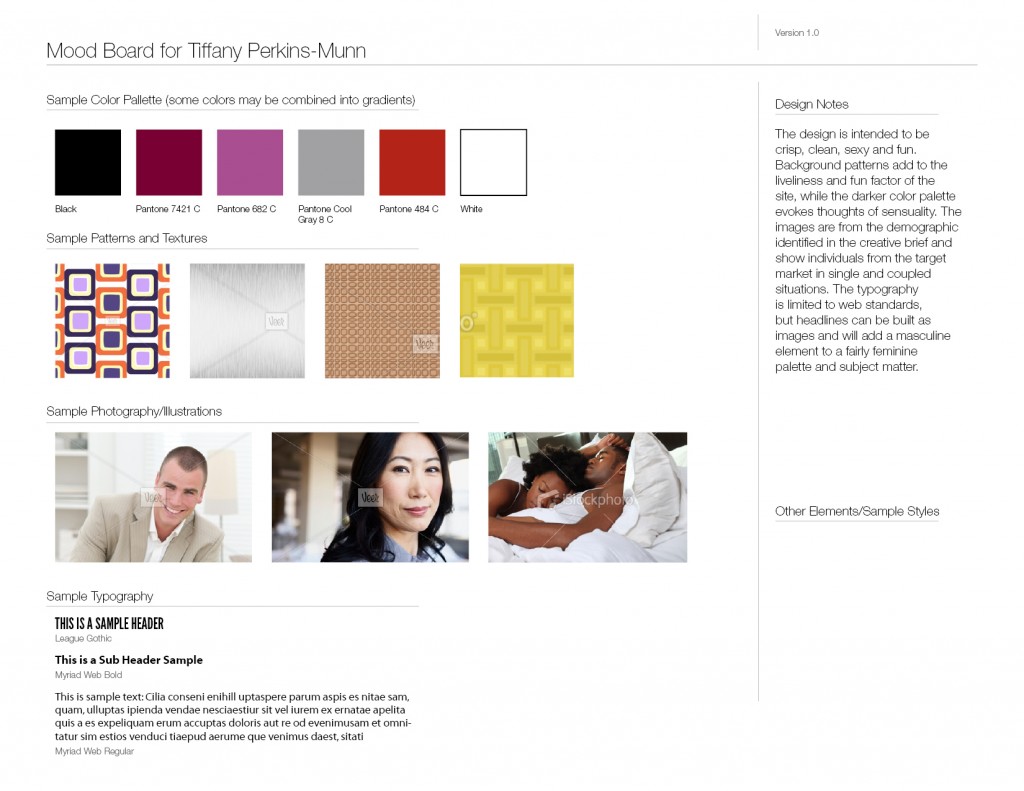
I’m in the mood (board)
Recently I asked my peers on LinkedIn.com about their opinion on the use of mood boards. There was a mixed response. Some were fully in support, others thought that it was an unnecessary step in the development of a design project. I’ve made a decision: mood boards are essential steps in the creative process.
One of the themes that I have found in my spelunking is that creatives found it frustrating that clients don’t /can’t buy in to their perfect design. And I realized that that clients (especially small business clients who have no filter) didn’t buy in because the design came as a shock to them because (surprise!) they didn’t effectively communicate their vision for the end product. We all know, unless it pops out of our favorite cake with a wad of hundreds, people generally don’t like shocks.
As a matter of course creatives and small business clients should demand that a creative brief be drafted and perfected so that each party can know what to expect from each other from a creative standpoint and minimize those end product surprises. That said, a significant problem with creative briefs is that they are prose documents and don’t give the client an idea of the look and feel of the finished product.
So how to manage that? Enter the mood board.
The mood board outlines the color palette, images, typography and other design criteria in a visual manner that the creative brief cannot.
The mood board is a way to get clients to buy into the visual aspect of the design project and can reduce the number of iterations before approval. So, especially when it comes to a project where M19 MEDIA is developing a new brand, style guide or critical design project, we will employ a mood board as part of our creative brief.
As a small business client (hell, as any client) you should ask for a mood board from your creative vendor. Creatives? Get the client buy in on the mood board. It will save you time and effort. Below, you will find a mood board for a current client. And yes, I was listening to Robert Plant while I wrote this post.
